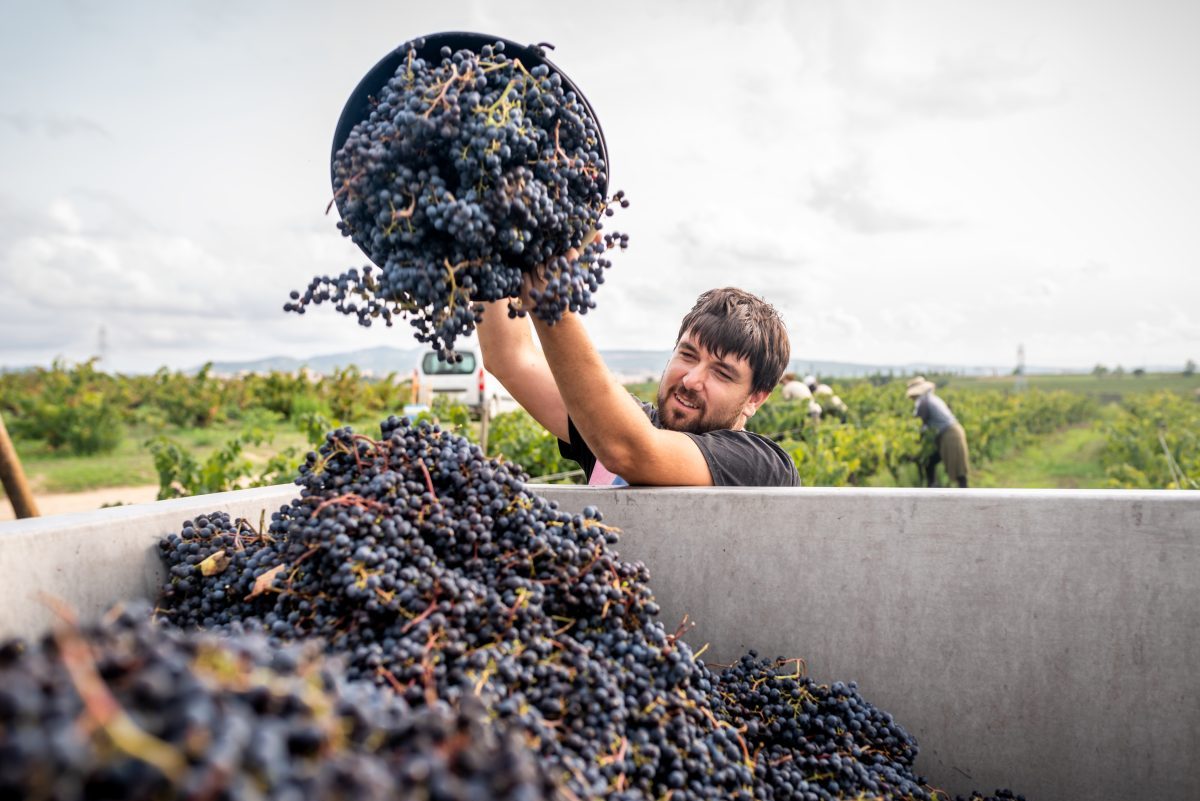Wine Australia has released its National Vintage Report 2024, which has shown the Australian winegrape crush increased by nine per cent on last year, to an estimated 1.43 million tonnes, which is well below the 10-year average of 1.73 million tonnes.
The 2023 crush was a 23-year low, and Wine Australia Manager, Market Insights, Peter Bailey said that over the past few years there has been a declining trend in Australia’s winegrape crush.
“This is the third vintage in the past five that has been below the 10-year average. As a result, we’ve seen the five-year average decrease by over 100,000 tonnes in the past two years,” Bailey said.
“However, the reduction in the crush doesn’t necessarily reflect a decrease in the underlying supply base. There is no indication that the vineyard area has declined significantly, so the potential for a large crop still exists without active management of yields.”
This year’s national vintage report also showed a nine per cent increase on last year equates to 112,000 tonnes, which was driven entirely by the 117,000 tonne increase in white winegrape varieties, up to 722,000 tonnes in total. Despite the 19 per cent increase in white varieties crush, it was still the second smallest in 17 years and was 10 per cent below the 10-year average.
The red grape crush declined by just under 5000 tonnes to 705,000, which is the smallest red crush since the drought-affected 2007 vintage and is 40 per cent below the 2021 peak of 1.2 million tonnes.
The rise in white and decline in red grape crushes means that for the first time since 2014 the white crush is higher than the red crush.
“The overall reduction in the red crush is entirely driven by Shiraz, which decreased by nearly 48,000 tonnes while most other red varieties increased. This decrease was not just from the inland regions, with the Barossa and Clare Valleys accounting for one-third of the reduction,” Bailey said.
“Seasonal factors have contributed to 2024 being another small vintage. However, the significant further reduction in the red crush can be largely attributed to decisions made by grape growers and wine businesses to reduce production. These decisions are being driven by low grape prices, significant red wine stock overhangs and reduced global demand for wine.”
In terms of varietals Chardonnay increased by 31 per cent to 333,000 tonnes, overtaking Shiraz to become the largest variety by crush size for the first time since. Shiraz decreased by 14 per cent to 298,000 tonnes – its smallest crush since 2007.
South Australia accounted for the largest share of the national crush size (49 per cent) but decreased by four per cent and lost six percentage points of share to the other states. All other states except Western Australia increased their crush compared with 2023, with Tasmania increasing by 42 per cent to a record estimated crush of 16,702 tonnes.
The National Vintage Report stated the value of this year’s crush is estimated to be $1.01bn, which is a two per cent increase on last year’s the was an overall decrease in the average value per tonne from $642 to $613.
Bailey said that the overall decline in the average value was mainly driven by a decrease in average grape prices paid for both red and white grapes from warm inland regions, combined with an increase in the share of tonnes from these regions.
“It’s important for growers to look at the price changes for individual regions and varieties, to get a true picture of the market signals. However, the overall 2024 results, particularly the on-going decline in prices for the major inland varieties, indicate that there is no shortfall in supply from the inland regions, despite the successive low vintages.”
Bailey also said that a better understanding of the underlying supply base was critical to enable growers and winemakers to make informed decisions regarding future grape production requirements.
“We welcome the recent announcement of the Grape and Wine Sector Long-term Viability Support Package from the Australian Government, which will support the development of a national vineyard register framework to help give the sector a clearer picture of the true supply nationally.”

